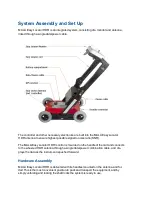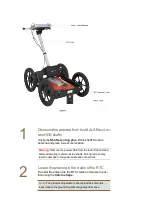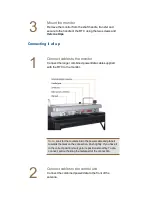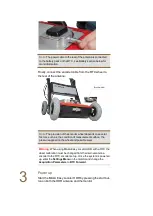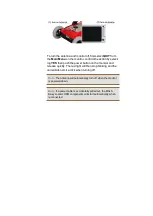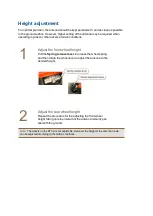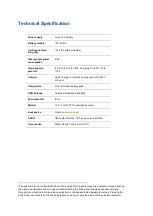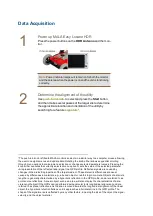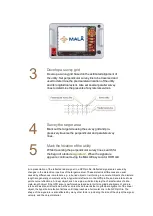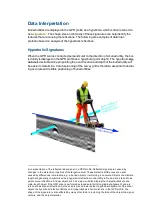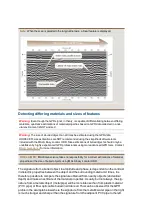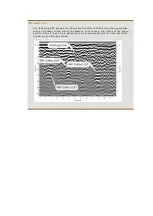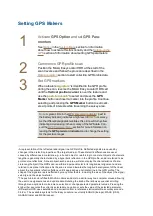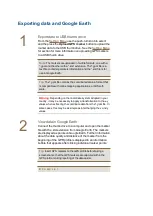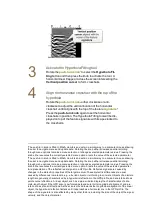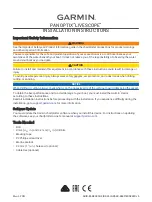
Note:
When the scan is parallel to the longitudinal axis, a linear feature is displayed.
Detecting differing materials and sizes of features
Warning:
Even though the GPR signal, in theory, is capable of differentiating between differing
materials, qualitative estimations of material properties based on GPR data collected in a nat-
ural environment is NOT advised.
Warning:
The size of a buried object can at times be estimated using the GPR data.
HOWEVER, size estimations are NOT recommended using the simplified software tools
included with the MALÅ Easy Locator HDR. Size estimations of buried objects should only be
undertaken by highly experienced GPR professionals using more advanced GPR tools. Contact
for more information.
DISCLAIMER:
MALÅ Geoscience takes no responsibility for incorrect estimations of material
properties or the size of buried objects using MALÅ Easy Locator HDR.
The signature from a buried object, in amplitude and phase, is dependent on the contrast
in dielectric properties between the object and the surrounding material. At times, it is
therefore possible to compare the signature obtained from nearby objects (at identical
depth) and make an estimate of the material properties. Usually, but not always, the sig-
nature from a metallic object (metal pipe) will be more intense than from plastic material
(PVC pipe) or fiber optic cable buried in similar soil. This can be observed for the GPR
profile in the example below where the signature from the metallic water pipe on the right
is much stronger and sharper than the signature from the adjacent PVC pipe to the left.

